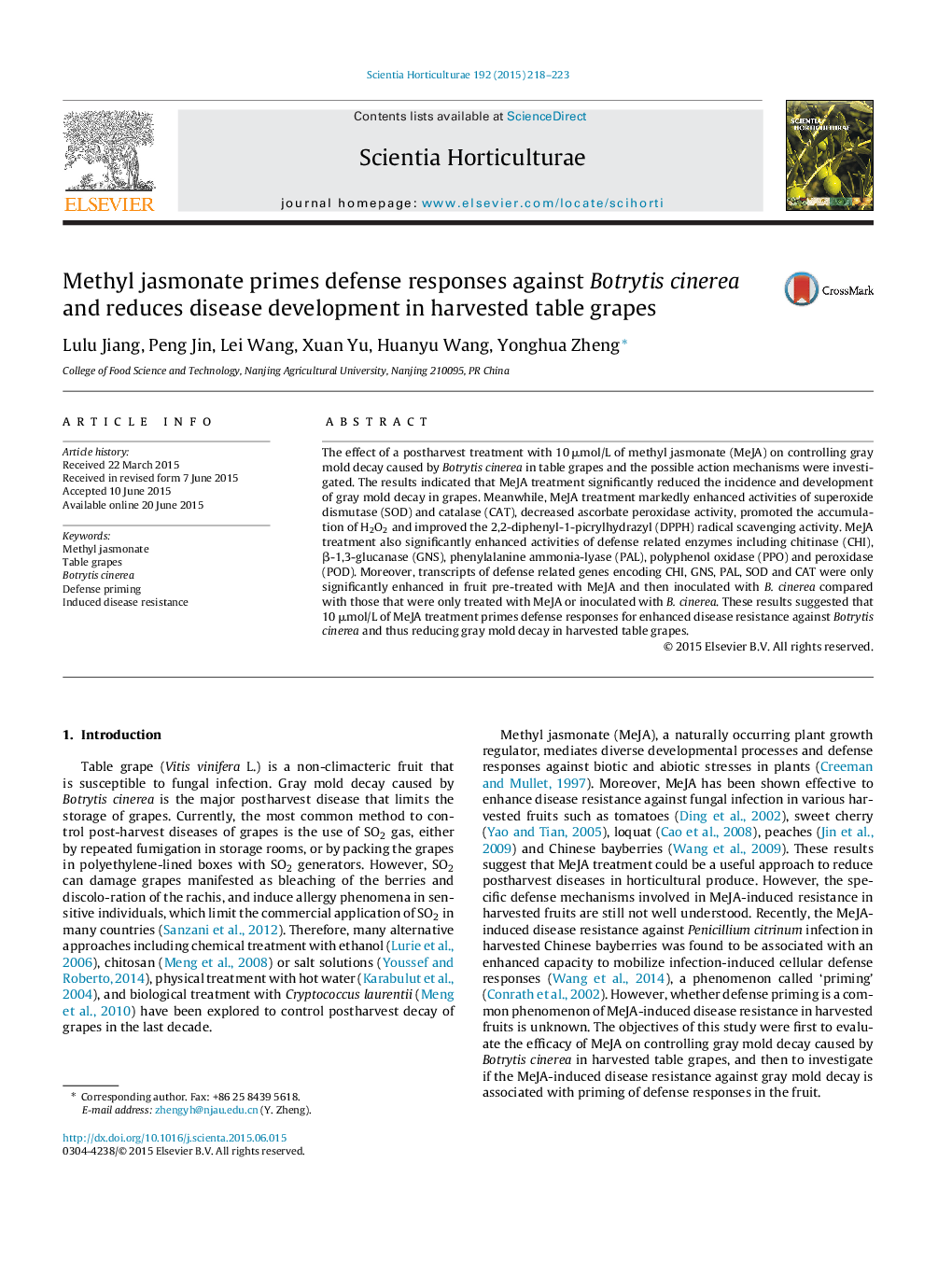| Article ID | Journal | Published Year | Pages | File Type |
|---|---|---|---|---|
| 4566251 | Scientia Horticulturae | 2015 | 6 Pages |
•Treatment with 10 μmol L−1 of MeJA significantly suppressed gray mold caused by B. cinerea in harvested table grapes.•MeJA treatment significantly enhanced enzyme activity and expression of defense related genes.•MeJA induced disease resistance against B. cinerea by priming of defense responses.
The effect of a postharvest treatment with 10 μmol/L of methyl jasmonate (MeJA) on controlling gray mold decay caused by Botrytis cinerea in table grapes and the possible action mechanisms were investigated. The results indicated that MeJA treatment significantly reduced the incidence and development of gray mold decay in grapes. Meanwhile, MeJA treatment markedly enhanced activities of superoxide dismutase (SOD) and catalase (CAT), decreased ascorbate peroxidase activity, promoted the accumulation of H2O2 and improved the 2,2-diphenyl-1-picrylhydrazyl (DPPH) radical scavenging activity. MeJA treatment also significantly enhanced activities of defense related enzymes including chitinase (CHI), β-1,3-glucanase (GNS), phenylalanine ammonia-lyase (PAL), polyphenol oxidase (PPO) and peroxidase (POD). Moreover, transcripts of defense related genes encoding CHI, GNS, PAL, SOD and CAT were only significantly enhanced in fruit pre-treated with MeJA and then inoculated with B. cinerea compared with those that were only treated with MeJA or inoculated with B. cinerea. These results suggested that 10 μmol/L of MeJA treatment primes defense responses for enhanced disease resistance against Botrytis cinerea and thus reducing gray mold decay in harvested table grapes.
